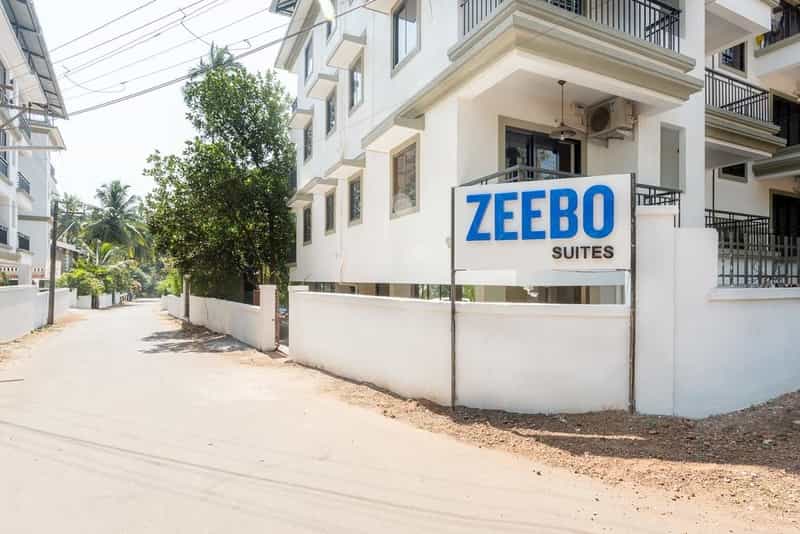When you think about a relaxed beach holiday, one of the first places to come to mind is the sunshine state of Goa. It’s most travellers’ dream destination, Goa is a fabulous place for a weekend break or long holiday. The beaches here are a big hit with tourists and the nightlife is just fantastic. Mind you, Goa also has some other fun things to do like adventure sports and sightseeing.
While booking a holiday to Goa, one of the major things to consider is accommodation. You want a good, clean place to stay that is also safe and well-connected. You do not want to spoil your holiday by opting for a resort or a homestay with bad facilities.
Treebo’s 3 star hotels are a good choice for any holiday in Goa. The hotels have excellent and comfortable amenities, well-trained staff and excellent security.
Travellers who visit Goa
The beautiful thing about Goa is that there is something for everyone to enjoy in the state. This is why Goa sees a host of different kinds of tourists visiting each year.
From Indian families looking for an easy summer break to couples seeking a romantic getaway. Goa is also a popular location for destination weddings and you often see entire wedding parties headed here.
With its many water sports activities, nightclubs and beaches, the state is a fun place to go in a group.
Goa has tons of business travellers who visit for meetings, conferences or on company leisure trips.
The place sees scores of national and international travellers flocking to its shores every year.
3 Star Treebo Hotels in Goa
1. Treebo Aqua Blu

treebo aqua blu
Situated close to Calangute Beach, the Treebo Aqua Blu offers comfortable facilities and has awesome amenities for a nice, relaxed holiday. The rooms of the hotel have attached private bathrooms, flat screen TVs, and you can choose a room with a balcony and fridge if you like.
Toiletries are provided complimentary in every room and the hotel has a 24-hour front desk service, along with room service. Free Wi-FI is available.
- Location: Naika Waddo, Calangute
2. Treebo Waters Edge

Treebo Waters Edge
The Treebo Waters Edge has comfortable rooms that are air-conditioned. Bathrooms have bathtubs, and each room houses a full HD flat screen TV with satellite access.
The hotel offers 24-hour information desk, swimming pools, free WiFi, laundry service and free breakfast buffet. There are airport transfers and an in-house restaurant serving delicious food.
- Location: Dongrim, Nevum
3. Treebo WTF My House

Treebo WTF My House
A fun hotel to stay in, the Treebo WTF My House is located close to Baga Beach. The hotel has clean and comfortable rooms and offers prompt room service, a laundrette, luggage storage facilities and a bar. There’s also a garden at the hotel and an in-house restaurant.
Location: Saunta Vaddo, Baga
4. Treebo Pebble Shore Resort

Treebo Pebble Shore Resort
Treebo Pebble Shore Resort is located close to Morjim Beach. With excellent service and good amenities, the hotel is quite popular with budget travellers.
It has cosy and pleasant rooms with good amenities. Other facilities at the hotel include laundry services, parking facilities and a 24-hour front desk.
- Location: Morjim
5. Treebo Zeebo Suites

Treebo Zeebo Suites
The hotel is situated close to the Saturday Night Market and Club Cabana. It is the ideal place to stay for those who love nightlife and parties.
The hotel has comfortable and clean rooms and is equipped with all the needed amenities. Additional features are the inclusion of a kettle and stove in the room.
- Location: Baga-Calangute Road
6. Treebo Maison Ocean Beach Resort

Treebo Maison Ocean Beach Resort
Treebo Maison Ocean Beach Resort faces the beach and offers excellent views of the seashore. The hotel has excellent facilities for its guests. There is daily room cleaning services and in-room breakfast.
The hotel is equipped with great safety features such as CCTV cameras, fire extinguishers and 24-hour security.
- Location: Ashvem Beach Road
7. Treebo Vila de Goa

Treebo Vila de Goa
Treebo Vila de Goa is a great place for a comfortable stay. Although it is a little away from the beach, the hotel has great services and cosy rooms with complimentary tea/coffee and toiletries.
All rooms have flat screen TVs with satellite TV and free WiFi. Some rooms at the hotel have balconies and the hotel offers laundry and room services.
- Location: Siolim
8. Treebo Village Susegat Beach Resort

Treebo Village Susegat Beach Resort
The Treebo Village Susegat Beach Resort is a nice place for a relaxed getaway. Cosy and clean rooms await guests at the hotel.
Rooms here are equipped with all the latest amenities and the hotel has an in-house bar and restaurant. There’s also a swimming pool and they serve an amazing breakfast.
- Location: Morjim Beach Road
9. Treebo Martins Siesta

Treebo Martins Siesta
Just as the name says, this hotel offers you the ‘Siesta’ life. It is located within a scenic property and offers its guests with all the latest amenities.
Rooms here are comfortable and have excellent facilities. The hotel has a fully stocked bar and there’s even free breakfast available.
- Location: Parra
10. Treebo XEC Residency

Treebo XEC Residency
Located in the heart of Gogol, the Treebo XEC Residency is a comfortable hotel that has excellent amenities and 32 comfortable rooms. Conveniently located near the Madgaon bus station, the hotel is serene and calm, the perfect place for couples, families and solo travellers.
The rooms here offer the choice between king and queen beds, have free WiFi and also flat screen satellite TV.
- Location: Gogol
11. Treebo Dempo River Sal

Treebo Dempo River Sal
The Treebo Dempo River Sal offers the complete laidback Goan experience. Expect comfortable rooms and amazing amenities.
There’s free Wi-Fi available and rooms are equipped with satellite TV and amenities such as complimentary tea and coffee.
- Location: Cavelossim
12. Treebo Lands End Beach Resort

Treebo Lands End Beach Resort
Located in one of the most happening beach towns in Goa, Treebo Lands End Beach Resort is a quaint hotel, ideal for a relaxed getaway.
The hotel offers all the facilities for a comfortable stay. There is an in-house bar offering a fine selection of cocktail and delicious munchies.
- Location: Morjim
What to Do in Goa
If you want to explore Goa, here are the things you can do and see:
Places to See in Goa
Goa has excellent sites to visit. Explore the many old Portuguese churches, a few museums and many ancient temples. The Old Goa Church complex and the Mangeshi temple are two important places to visit in Goa.
Things to Do in Goa
Adventure sports enthusiasts can indulge in the water sports on the beaches in Goa. Another great activity to enjoy in Goa is scuba diving, in South Goa, you can enjoy scuba diving at many beaches. Those who love exploring and book a city tour.
Also check : Things to Do in Goa
Street Food to Try
Goa being a tourist destination offer a fairly decent selection of street foods. Non-vegetarians can enjoy delicacies like Chorizo Pav, fried fish and chicken cutlets. Vegetarians can enjoy chaats, misal pav and puri bhaji.
Shopping in Goa
Shopping in Goa is a fantastic experience, you can visit the flea markets you can get yourself antiques, handicrafts and a host of unique products. The Panjim, Mapusa and Margao markets are nice places to buy spices, Goan sweets and port wine.
Book hotels in Goa and get 100% guaranteed quality stay.






















